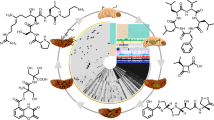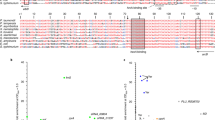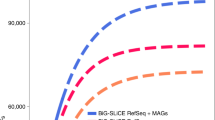Abstract
Xenorhabdus and Photorhabdus species dedicate a large amount of resources to the production of specialized metabolites derived from non-ribosomal peptide synthetase (NRPS) or polyketide synthase (PKS). Both bacteria undergo symbiosis with nematodes, which is followed by an insect pathogenic phase. So far, the molecular basis of this tripartite relationship and the exact roles that individual metabolites and metabolic pathways play have not been well understood. To close this gap, we have significantly expanded the database for comparative genomics studies in these bacteria. Clustering the genes encoded in the individual genomes into hierarchical orthologous groups reveals a high-resolution picture of functional evolution in this clade. It identifies groups of genes—many of which are involved in secondary metabolite production—that may account for the niche specificity of these bacteria. Photorhabdus and Xenorhabdus appear very similar at the DNA sequence level, which indicates their close evolutionary relationship. Yet, high-resolution mass spectrometry analyses reveal a huge chemical diversity in the two taxa. Molecular network reconstruction identified a large number of previously unidentified metabolite classes, including the xefoampeptides and tilivalline. Here, we apply genomic and metabolomic methods in a complementary manner to identify and elucidate additional classes of natural products. We also highlight the ability to rapidly and simultaneously identify potentially interesting bioactive products from NRPSs and PKSs, thereby augmenting the contribution of molecular biology techniques to the acceleration of natural product discovery.
This is a preview of subscription content, access via your institution
Access options
Access Nature and 54 other Nature Portfolio journals
Get Nature+, our best-value online-access subscription
$29.99 / 30 days
cancel any time
Subscribe to this journal
Receive 12 digital issues and online access to articles
$119.00 per year
only $9.92 per issue
Buy this article
- Purchase on Springer Link
- Instant access to full article PDF
Prices may be subject to local taxes which are calculated during checkout





Similar content being viewed by others
References
Challinor, V. L. & Bode, H. B. Bioactive natural products from novel microbial sources. Ann. NY Acad. Sci. 1354, 82–97 (2015).
Bozhüyük, K. A. J. et al. Natural products from Photorhabdus and other entomopathogenic bacteria. Curr. Top. Microbiol. Immunol. 402, 55–79 (2017).
Stock, S. P., Campbell, J. F. & Nadler, S. A. Phylogeny of Steinernema travassos, 1927 (Cephalobina: Steinernematidae) inferred from ribosomal DNA sequences and morphological characters. J. Parasitol. 87, 877–889 (2001).
Forst, S., Dowds, B., Boemare, N. & Stackebrandt, E. Xenorhabdus and Photorhabdus spp.: bugs that kill bugs. Annu. Rev. Microbiol. 51, 47–72 (1997).
Han, R. & Ehlers, R. U. Pathogenicity, development, and reproduction of Heterorhabditis bacteriophora and Steinernema carpocapsae under axenic in vivo conditions. J. Invertebr. Pathol. 75, 55–58 (2000).
Tobias, N. J. et al. Photorhabdus‐nematode symbiosis is dependent on hfq‐mediated regulation of secondary metabolites. Environ. Microbiol. 19, 119–129 (2016).
Crawford, J. M., Portmann, C., Zhang, X., Roeffaers, M. B. J. & Clardy, J. Small molecule perimeter defense in entomopathogenic bacteria. Proc. Natl Acad. Sci. USA 109, 10821–10826 (2012).
Singh, S. et al. Role of secondary metabolites in establishment of the mutualistic partnership between Xenorhabdus nematophila and the entomopathogenic nematode Steinernema carpocapsae. Appl. Environ. Microbiol. 81, 754–764 (2015).
Tobias, N. J. et al. Genome comparisons provide insights into the role of secondary metabolites in the pathogenic phase of the Photorhabdus life cycle. BMC Genomics 17, 537 (2016).
Lango, L. & Clarke, D. J. A metabolic switch is involved in lifestyle decisions in Photorhabdus luminescens. Mol. Microbiol. 77, 1394–1405 (2010).
Shapiro, D. I., Giazer, I. & Segal, D. Genetic diversity in wild and laboratory populations of Heterorhabditis bacteriophora as determined by RAPD–PCR analysis. Fund. Appl. Nematol. 20, 581–585 (1997).
Thanwisai, A. et al. Diversity of Xenorhabdus and Photorhabdus spp. and their symbiotic entomopathogenic nematodes from Thailand. PLoS ONE 7, e43835 (2012).
Lee, M.-M. & Stock, S. P. A multilocus approach to assessing co-evolutionary relationships between Steinernema spp. (Nematoda: Steinernematidae) and their bacterial symbionts Xenorhabdus spp. (γ-Proteobacteria: Enterobacteriaceae). Syst. Parasitol. 77, 1–12 (2010).
Altenhoff, A. M. et al. The OMA orthology database in 2015: function predictions, better plant support, synteny view and other improvements. Nucleic Acids Res. 43, D240–D249 (2015).
Mulley, G. et al. From insect to man: Photorhabdus sheds light on the emergence of human pathogenicity. PLoS ONE 10, e0144937 (2015).
Weber, T. et al. antiSMASH 3.0—a comprehensive resource for the genome mining of biosynthetic gene clusters. Nucleic Acids Res. 43, W237–W243 (2015).
Bode, H. B. & Müller, R. The impact of bacterial genomics on natural product research. Angew. Chem. Int. Ed. 44, 6828–6846 (2005).
Bode, E. et al. Simple ‘on-demand’ production of bioactive natural products. ChemBioChem 16, 1115–1119 (2015).
Schimming, O. et al. Structure, biosynthesis, and occurrence of bacterial pyrrolizidine alkaloids. Angew. Chem. Int. Ed. 54, 12702–12705 (2015).
Zhou, Q. et al. Structure and biosynthesis of xenoamicins from entomopathogenic Xenorhabdus. Chemistry 19, 16772–16779 (2013).
Park, H. B. & Crawford, J. M. Lumiquinone A, an α-aminomalonate-derived aminobenzoquinone from Photorhabdus luminescens. J. Nat. Prod. 78, 1437–1441 (2015).
Wang, M. et al. Sharing and community curation of mass spectrometry data with Global Natural Products Social Molecular Networking. Nat. Biotechnol. 34, 828–837 (2016).
Watrous, J. et al. Mass spectral molecular networking of living microbial colonies. Proc. Natl Acad. Sci. USA 109, E1743–E1752 (2012).
Darby, A. et al. Cytotoxic and pathogenic properties of Klebsiella oxytoca isolated from laboratory animals. PLoS ONE 9, e100542 (2014).
Mohr, N. & Budzikiewicz, H. Tilivalline, a new pyrrolo[2,1-c][1,4] benzodiazepine metabolite from Klebsiella. Tetrahedron 38, 147–152 (1982).
Bode, H. B. et al. Determination of the absolute configuration of peptide natural products by using stable isotope labeling and mass spectrometry. Chemistry 18, 2342–2348 (2012).
Nollmann, F. I. et al. Insect-specific production of new GameXPeptides in Photorhabdus luminescens TTO1, widespread natural products in entomopathogenic bacteria. ChemBioChem 16, 205–208 (2015).
Kegler, C. et al. Rapid determination of the amino acid configuration of xenotetrapeptide. ChemBioChem 15, 826–828 (2014).
Ross, A. C. et al. Biosynthetic multitasking facilitates thalassospiramide structural diversity in marine bacteria. J. Am. Chem. Soc. 135, 1155–1162 (2013).
Crawford, J. M., Portmann, C., Kontnik, R., Walsh, C. T. & Clardy, J. NRPS substrate promiscuity diversifies the xenematides. Org. Lett. 13, 5144–5147 (2011).
Lang, G., Kalvelage, T., Peters, A., Wiese, J. & Imhoff, J. F. Linear and cyclic peptides from the entomopathogenic bacterium Xenorhabdus nematophilus. J. Nat. Prod. 71, 1074–1077 (2008).
Grundmann, F. et al. Structure determination of the bioactive depsipeptide xenobactin from Xenorhabdus sp. PB30.3. RSC Adv. 3, 22072–22077 (2013).
Akhurst, R. J. Xenorhabdus nematophilus subsp. poinarii: its interaction with insect pathogenic nematodes. Syst. Appl. Microbiol. 8, 142–147 (1986).
Ogier, J.-C. et al. Attenuated virulence and genomic reductive evolution in the entomopathogenic bacterial symbiont species, Xenorhabdus poinarii. Genome Biol. Evol. 6, 1495–1513 (2014).
Sun, Y. et al. The impact of Cu, Zn and Cr salts on the relationship between insect and plant parasitic nematodes: a reduction in biocontrol efficacy. Appl. Soil Ecol. 107, 108–115 (2016).
Hirschmann, M., Grundmann, F. & Bode, H. B. Identification and occurrence of the hydroxamate siderophores aerobactin, putrebactin, avaroferrin and ochrobactin C as virulence factors from entomopathogenic bacteria. Environ. Microbiol. https://doi.org/10.1111/1462-2920.13845 (2017).
Somvanshi, V. S. et al. A single promoter inversion switches Photorhabdus between pathogenic and mutualistic states. Science 337, 88–93 (2012).
Schneditz, G. et al. Enterotoxicity of a nonribosomal peptide causes antibiotic-associated colitis. Proc. Natl Acad. Sci. USA 111, 13181–13186 (2014).
Duchaud, E. et al. The genome sequence of the entomopathogenic bacterium Photorhabdus luminescens. Nat. Biotechnol. 21, 1307–1313 (2003).
Hu, K. & Webster, J. M. Antibiotic production in relation to bacterial growth and nematode development in Photorhabdus–Heterorhabditis infected Galleria mellonella larvae. FEMS Microbiol. Lett. 189, 219–223 (2000).
ffrench-Constant, R. H., Dowling, A. & Waterfield, N. R. Insecticidal toxins from Photorhabdus bacteria and their potential use in agriculture. Toxicon 49, 436–451 (2007).
Böszörményi, E. et al. Isolation and activity of Xenorhabdus antimicrobial compounds against the plant pathogens Erwinia amylovora and Phytophthora nicotianae. J. Appl. Microbiol. 107, 746–759 (2009).
Theodore, C. M., King, J. B., You, J. & Cichewicz, R. H. Production of cytotoxic glidobactins/luminmycins by Photorhabdus asymbiotica in liquid media and live crickets. J. Nat. Prod. 75, 2007–2011 (2012).
Reimer, D., Pos, K. M., Thines, M., Grün, P. & Bode, H. B. A natural prodrug activation mechanism in nonribosomal peptide synthesis. Nat. Chem. Biol. 7, 888–890 (2011).
Bolger, A. M., Lohse, M. & Usadel, B. Trimmomatic: a flexible trimmer for Illumina sequence data. Bioinformatics 30, 2114–2120 (2014).
Nikolenko, S. I., Korobeynikov, A. I. & Alekseyev, M. A. BayesHammer: Bayesian clustering for error correction in single-cell sequencing. BMC Genomics 14, S7 (2013).
Bankevich, A. et al. SPAdes: a new genome assembly algorithm and its applications to single-cell sequencing. J. Comput. Biol. 19, 455–477 (2012).
Kurtz, S. et al. Versatile and open software for comparing large genomes. Genome Biol. 5, R12 (2004).
Seemann, T. Prokka: rapid prokaryotic genome annotation. Bioinformatics 30, 2068–2069 (2014).
Li, W., Jaroszewski, L. & Godzik, A. Clustering of highly homologous sequences to reduce the size of large protein databases. Bioinformatics 17, 282–283 (2001).
Wattam, A. R. et al. PATRIC, the bacterial bioinformatics database and analysis resource. Nucleic Acids Res. 42, D581–D591 (2014).
Zankari, E. et al. Identification of acquired antimicrobial resistance genes. J. Antimicrob. Chemother. 67, 2640–2644 (2012).
Chen, L. VFDB: a reference database for bacterial virulence factors. Nucleic Acids Res. 33, D325–D328 (2004).
Liu, B. & Pop, M. ARDB—Antibiotic Resistance Genes Database. Nucleic Acids Res. 37, D443–D447 (2009).
Altenhoff, A. M. & Dessimoz, C. in Evolutionary Genomics Vol. 855 (ed. Anisimova, M.) 259–279 (Humana Press, New York, 2012).
Tettelin, H. et al. Genome analysis of multiple pathogenic isolates of Streptococcus agalactiae: implications for the microbial ‘pan-genome’. Proc. Natl Acad. Sci. USA 102, 13950–13955 (2005).
Ebersberger, I. et al. A consistent phylogenetic backbone for the fungi. Mol. Biol. Evol. 29, 1319–1334 (2012).
Katoh, K. & Standley, D. M. MAFFT multiple sequence alignment software version 7: improvements in performance and usability. Mol. Biol. Evol. 30, 772–780 (2013).
Kück, P. & Longo, G. C. FASconCAT-G: extensive functions for multiple sequence alignment preparations concerning phylogenetic studies. Front. Zool. 11, 758 (2014).
Stamatakis, A. RAxML version 8: a tool for phylogenetic analysis and post-analysis of large phylogenies. Bioinformatics 30, 1312–1313 (2014).
Altenhoff, A. M., Gil, M., Gonnet, G. H. & Dessimoz, C. Inferring hierarchical orthologous groups from orthologous gene pairs. PLoS ONE 8, e53786 (2013).
Conesa, A. et al. Blast2GO: a universal tool for annotation, visualization and analysis in functional genomics research. Bioinformatics 21, 3674–3676 (2005).
Shannon, P. et al. Cytoscape: a software environment for integrated models of biomolecular interaction networks. Genome Res. 13, 2498–2504 (2003).
Acknowledgements
Research in the Bode Laboratory was supported by a European research starting grant under grant agreement no. 311477. H.B.B. acknowledges the Deutsche Forschungsgemeinschaft for funding of the Impact II qTof mass spectrometer (INST 161/810-1). N.J.T. and Y.M.S. are supported by a Postdoctoral Research Fellowship from the Alexander von Humboldt Foundation. S.J.P. is supported by an Australian National Health and Medical Research Council (NHMRC) project grant APP1105522. T.P.S. is supported by an Australian NHMRC Career Development Fellowship. I.E. acknowledges financial support by the Deutsche Forschungsgemeinschaft (DFG-FOR 2251, project grant EB 285/2-1).
Author information
Authors and Affiliations
Contributions
N.J.T., H.W., B.D., I.E. and H.B.B. designed the study. N.J.T., H.W., B.D., F.G., M.K., Y.-M.S., S.S., P.G., D.S.-I, S.J.P., T.P.S., I.E. and H.B.B. contributed to analysis of the data. N.J.T., H.W., B.D., Y.-M.S., S.J.P., T.P.S., I.E. and H.B.B. were involved in preparation of the manuscript.
Corresponding author
Ethics declarations
Competing interests
The authors declare no competing financial interests.
Additional information
Publisher’s note: Springer Nature remains neutral with regard to jurisdictional claims in published maps and institutional affiliations.
Electronic supplementary material
Supplementary Information
Extra results regarding structure elucidation of compounds described in the text and Supplementary Tables 1 and 8–18, as well as Supplementary Figures 1–54 and Supplementary References.
Supplementary Table 2
List of locus tags for all orthologous groups.
Supplementary Table 3
HOG gains at Node A.
Supplementary Table 4
HOG gains at Node B.
Supplementary Table 5
HOG gains at Node C.
Supplementary Table 6
Analysis of gene ontology pathways using the HOGs at a given node compared to the last common ancestor.
Supplementary Table 7
Custom database of known natural products.
Rights and permissions
About this article
Cite this article
Tobias, N.J., Wolff, H., Djahanschiri, B. et al. Natural product diversity associated with the nematode symbionts Photorhabdus and Xenorhabdus . Nat Microbiol 2, 1676–1685 (2017). https://doi.org/10.1038/s41564-017-0039-9
Received:
Accepted:
Published:
Issue Date:
DOI: https://doi.org/10.1038/s41564-017-0039-9
This article is cited by
-
Genetic toolbox for Photorhabdus and Xenorhabdus: pSEVA based heterologous expression systems and CRISPR/Cpf1 based genome editing for rapid natural product profiling
Microbial Cell Factories (2024)
-
Effects of Xenorhabdus and Photorhabdus bacterial metabolites on the ovipositional activity of Aedes albopictus
Journal of Pest Science (2024)
-
Evaluation of cell-free supernatants from the symbiotic bacteria of entomopathogenic nematodes for controlling the colorado potato beetle [Leptinotarsa decemlineata (Say) (Coleoptera: Chrysomelidae)]
Journal of Plant Diseases and Protection (2024)
-
Discovery of an antitumor compound from xenorhabdus stockiae HN_xs01
World Journal of Microbiology and Biotechnology (2024)
-
Genome mining reveals novel biosynthetic gene clusters in entomopathogenic bacteria
Scientific Reports (2023)



